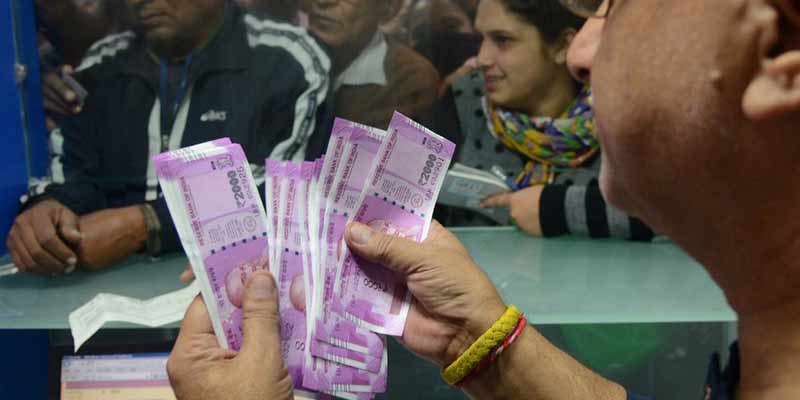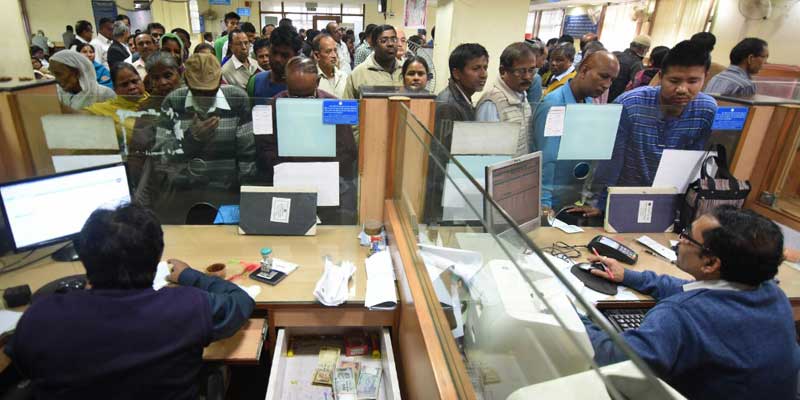- India
- Dec 13
Explainer / Bank deposit insurance coverage
Prime Minister Narendra Modi said that over 1 lakh depositors have got about Rs 1,300 crore of their money with stressed banks in the past few days. About 3 lakh more such account holders will soon get their deposits with the banks that are under the RBI moratorium.
He was addressing a function on the theme ‘Depositors First: Guaranteed Time-bound Deposit Insurance Payment up to Rs 5 Lakh’ on December 12.
The PM highlighted that the deposits worth Rs 76 lakh crore were insured under the Deposit Insurance and Credit Guarantee Corporation (DICGC) Act providing coverage to around 98 per cent of bank accounts.
In August, the Parliament passed the Deposit Insurance and Credit Guarantee Corporation (Amendment) Bill, 2021, ensuring that account holders get up to Rs 5 lakh within 90 days of the RBI imposing a moratorium on a bank.
The first tranche of interim payments has been released by the Deposit Insurance and Credit Guarantee Corporation recently against claims received from depositors of 16 Urban Cooperative Banks which are under restrictions by the RBI. The second tranche would be released on December 31, 2021.
What is deposit insurance?
• The Deposit Insurance and Credit Guarantee Corporation (DICGC), a wholly-owned subsidiary of the Reserve Bank of India, provides insurance cover on bank deposits.
• The DICGC insures each bank depositor up to a maximum of Rs 5 lakh for both principal and interest as on the date of liquidation or cancellation of a bank’s licence.
• DICGC insures all bank deposits, such as savings of fixed or current deposits or recurring deposits, and it covers all commercial banks, including foreign bank branches in India.
• The enhanced deposit insurance cover of Rs 5 lakh is effective from February 4, 2020. The increase was done after a gap of 27 years as it has been static since 1993.
• Every bank used to pay 10 paise as an insurance premium per Rs 100 of deposit. This was raised to 12 paise.
• All funds held in the same type of ownership at the same bank are added together before deposit insurance is determined. If the funds are in different types of ownership, or are deposited into separate banks they would then be separately insured.
Banks covered by deposit insurance scheme
• All commercial banks, including the branches of foreign banks functioning in India, Local Area Banks and Regional Rural Banks.
• All eligible co-operative banks as defined in Section 2(gg) of the DICGC Act are covered by the Deposit Insurance Scheme.
When was this concept introduced?
• The concept of insuring deposits kept with banks received attention for the first time in 1948 after the banking crisis in Bengal. The question came up for reconsideration in 1949, but it was decided to hold it in abeyance till the RBI ensured adequate arrangements for inspection of banks.
• Subsequently, in 1950, the Rural Banking Enquiry Committee also supported the concept. Serious thought to the concept was, however, given by the RBI and the central government after the crash of the Palai Central Bank Ltd, and the Laxmi Bank Ltd in 1960.
• The Deposit Insurance Corporation (DIC) Bill was introduced in Parliament on August 21, 1961. After it was passed by Parliament, the Bill got the assent of the President on December 7, 1961 and the Deposit Insurance Act, 1961 came into force on January 1, 1962.
• The Deposit Insurance Scheme was initially extended to functioning commercial banks only. This included the State Bank of India and its subsidiaries, other commercial banks and the branches of the foreign banks operating in India.
• Since 1968, with the enactment of the Deposit Insurance Corporation (Amendment) Act, 1968, the Corporation was required to register “eligible co-operative banks” as insured banks under the provisions of Section 13 A of the Act.
• The government, in consultation with the RBI, introduced a Credit Guarantee Scheme in July 1960. The RBI was entrusted with the administration of the scheme and was designated as the Credit Guarantee Organisation (CGO) for guaranteeing the advances granted by banks and other Credit Institutions to small scale industries. The RBI operated the scheme up to March 31, 1981.
• The RBI also promoted a public limited company on January 14, 1971, named the Credit Guarantee Corporation of India Ltd. (CGCI).
• With a view to integrating the functions of deposit insurance and credit guarantee, the above two organisations (DIC & CGCI) were merged and the present Deposit Insurance and Credit Guarantee Corporation (DICGC) came into existence on July 15, 1978.
• Union Finance Minister Nirmala Sitharaman in her Budget Speech had announced that changes will be made to the Deposit Insurance and Credit Guarantee Corporation (DICGC) Act, 1961.
Increase in insurance cover
Initially, the insurance cover was limited to Rs 1,500 only per depositor(s) for deposits held by him (them) in the “same right and in the same capacity” in all the branches of the bank taken together. However, the Act also empowers the Corporation to raise this limit with the prior approval of the central government.
Accordingly, the insurance limit was enhanced from time to time as follows:
• Rs 5,000 with effect from January 1, 1968.
• Rs 10,000 with effect from April 1, 1970.
• Rs 20,000 with effect from January 1, 1976.
• Rs 30,000 with effect from July 1, 1980.
• Rs 1 lakh with effect from May 1, 1993.
• Rs 5 lakh with effect from February 4, 2020.
Manorama Yearbook app is now available on Google Play Store and iOS App Store


